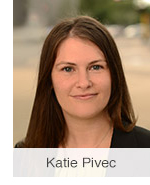|
Welcome to the Siegel Brill newsletter.
Knowing you and your businesses is our goal at Siegel Brill. There are always interesting things happening at our firm and people willing to share their knowledge; some of which just might benefit your business. We hope you enjoy our newsletter and getting to know us just a little better.
Q & As on Foodborne Illness
 By Elliot Olsen By Elliot Olsen
Elliot Olsen recently joined Siegel Brill and has been representing victims of serious and often life-threatening foodborne illness for nearly 20 years. He takes cases from all across the country and has been involved in cases in more than 25 states. The majority of his clients have had to be hospitalized as a result of their illness.
Below are some questions that Elliot frequently answers about his practice.
What do you like about this type of personal injury law?
I personally enjoy the science of it. The process of how epidemiologists and microbiologists as well as CDC personnel apply techniques of epidemiology and microbiology to track the source of a foodborne illness is very interesting. These kinds of personal injury cases are truly “law mixed with science.”
I am also very interested to learn about and understand my clientele and the severity of their medical issues. As a result of their foodborne illnesses, some of my clients have required kidney dialysis and are at high risk for the need for a kidney transplant. Some of them have other severe injuries, such as damage to their colon that requires surgery. Many people have resulting issues with their lungs. I end up seeing some very serious injuries. It can be very satisfying to get a judgment for a client with a serious injury to help them with their medical bills and help them to fully recover.
What types of clients use your services?
- Typically, I represent a single person or perhaps two people that require hospitalization from a larger outbreak.
- I have also often represented a substantially larger group of people, up to 30 or so, who all sought medical treatment but were hospitalized for only a short time, or were not hospitalized but nonetheless required medical management.
- Additionally, I have represented the families of people who have died from foodborne illness. There is a large percentage of wrongful death cases involved in foodborne illness.
CLICK TO READ MORE
4 Nanny Pitfalls to Avoid
 by Katie Pivec by Katie Pivec
When I found out I was pregnant with twins last spring, I started seeing double. Yes, twice the baby smiles, and twice the tiny baby booties, but also twice the midnight feedings – and twice the childcare costs. After crunching the numbers, it became apparent that our most cost-effective (and sanity saving) childcare choice would be to have in-home care. We put an ad out for a nanny, found someone wonderful and trustworthy and within our budget, and I was set to return to work knowing the babies were in capable hands. I also learned some useful facts about the legalities of hiring a nanny, including 4 nanny pitfalls you will want to avoid. Here for you is the fruit of my labor (which is also how I introduce my children to strangers).
Treating the Nanny as an Independent Contractor
Despite popular misconception, nannies (along with gardeners, housekeepers, drivers and pretty much all your favorite characters from Downton Abbey) are household employees, not independent contractors. As such, they are treated much differently than the teenaged neighbor you pay cash for babysitting a few hours on Friday night. Your nanny is entitled to all the protections for employees under state and federal law. This means that besides finding the right person for the job, you also need to keep in mind your own responsibilities for providing worker’s compensation coverage, payment of minimum wage and overtime pay, and complying with a myriad of tax obligations. Familiarizing yourself with these requirements ahead of time can save you from facing penalties and incurring liabilities that can come with misclassification.
Paying them “Under the Table”
Because the nanny is your employee, you must follow applicable employment laws regarding their compensation. These include payment of the federal and local minimum hourly wage, with withholdings for social security, medicare, and in some cases income taxes. You are also responsible for payment of the employer portion of these taxes, and for filing state and federal tax forms on a timely basis. Nannies are considered non-exempt employees, meaning that they are entitled to overtime pay for hours worked beyond 40 in a seven-day week. Keep this in mind when asking the nanny to stay late so you can finish writing that article for your firm’s newsletter...
While calculating taxes and withholding may seem like a daunting task, failing to do so puts you on the wrong side of the law, and could lead to hefty fines or even criminal prosecution. Further, paying these taxes ensures that the person caring for your children will have future access to government benefits such as unemployment insurance and social security payments.
CLICK TO READ MORE
Comprehensive Plan Updates: Do You Know What Your City Has in Mind for Your Property?
 By Mark Thieroff By Mark Thieroff
Every ten years, cities and townships located in Hennepin, Ramsey, Dakota, Scott, Washington, Anoka and Carver Counties must update their comprehensive plans. Cities and townships are currently working on their latest updates, which must be submitted to the Metropolitan Council for approval by the end of 2018. A comprehensive plan is the tool that local governments use to steer growth and change in a community, and it addresses topics including land use, housing, transportation, and redevelopment.
In the land use context, the comprehensive plan identifies a general land use category for a specific property—such as residential, commercial or industrial—while it is the city’s zoning ordinance that implements those categories with more detailed designations and regulations. Zoning ordinances are often thought of as the most important set of regulations for the property owner who is looking to develop a piece of land, but a comprehensive plan can significantly impact the use of a property, oftentimes without the knowledge of the owner.
Experienced real estate investors and developers understand that a city cannot alter the zoning for a piece of property without providing the owner with notice of the proposed change and an opportunity to be heard by the city council or planning commission. In contrast, no property-specific notice is required for a comprehensive plan change. A city must provide general notice of intent to amend its comprehensive plan, but that notice need only appear in a legal newspaper, and it typically will not provide any detail about proposed changes. As a result, it frequently occurs that a property owner learns only after the fact the comprehensive plan “guiding” for a particular property was changed.
CLICK TO READ MORE
|

